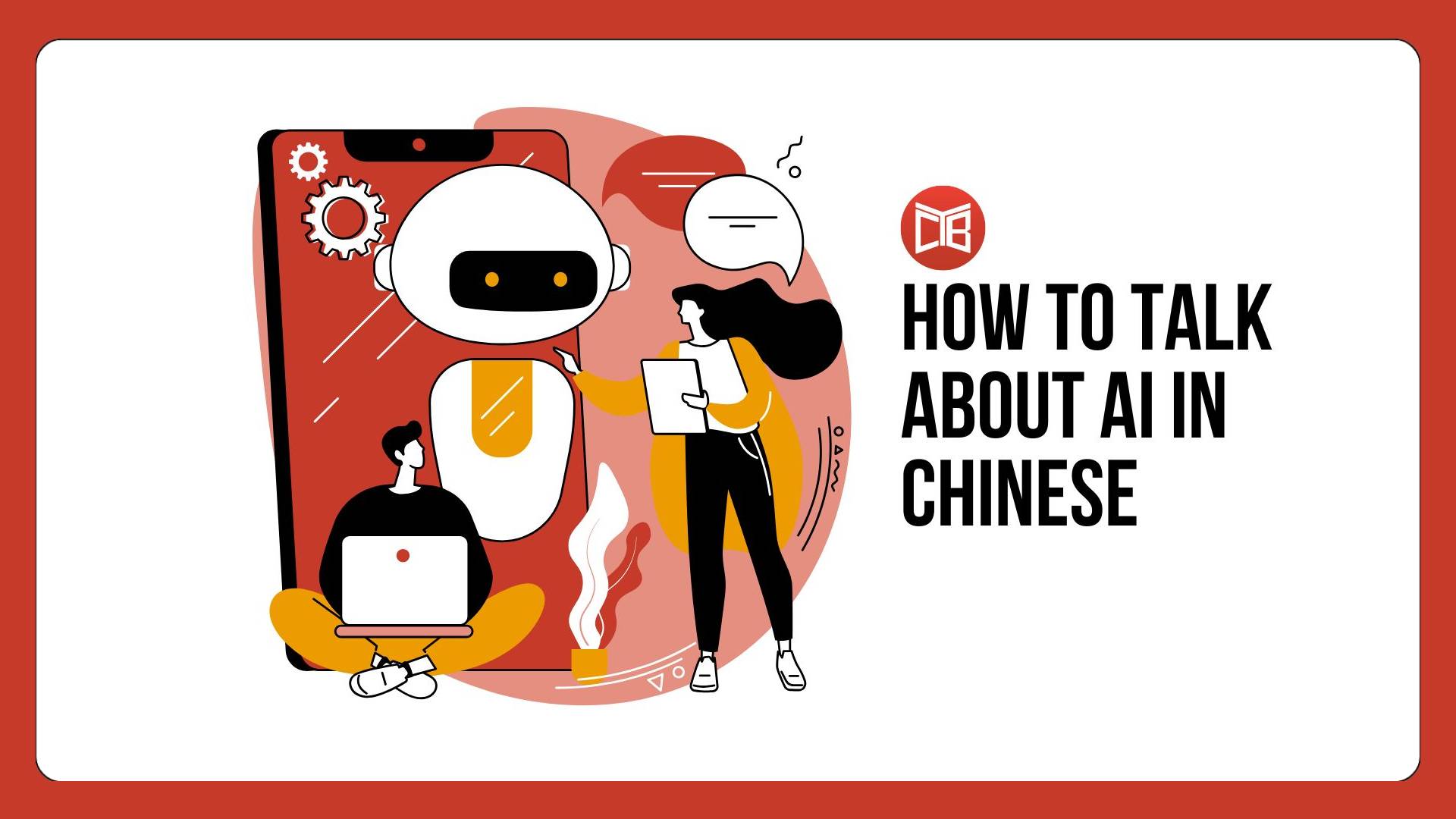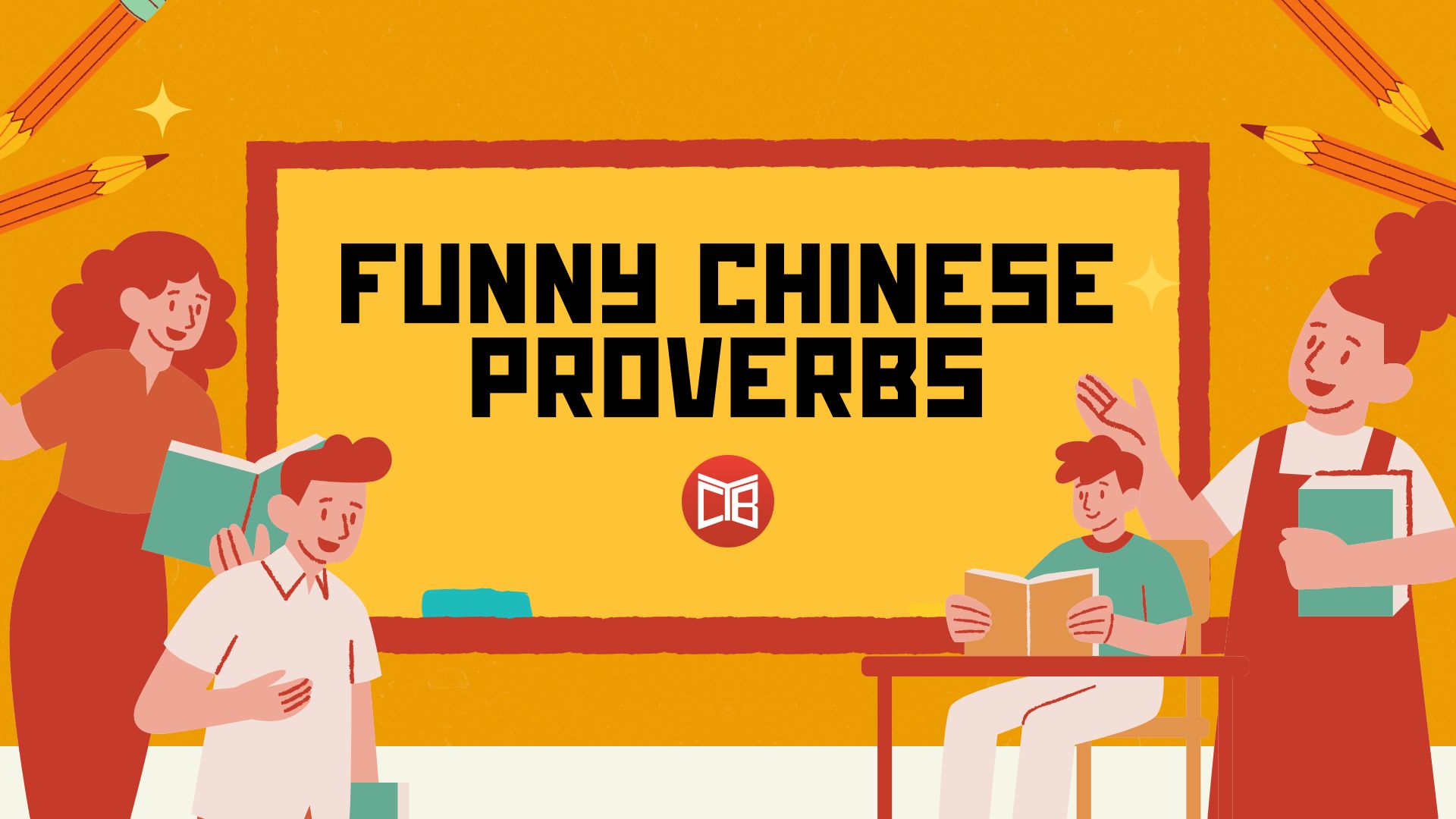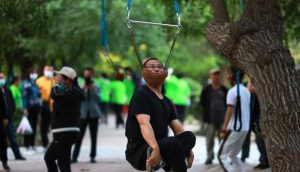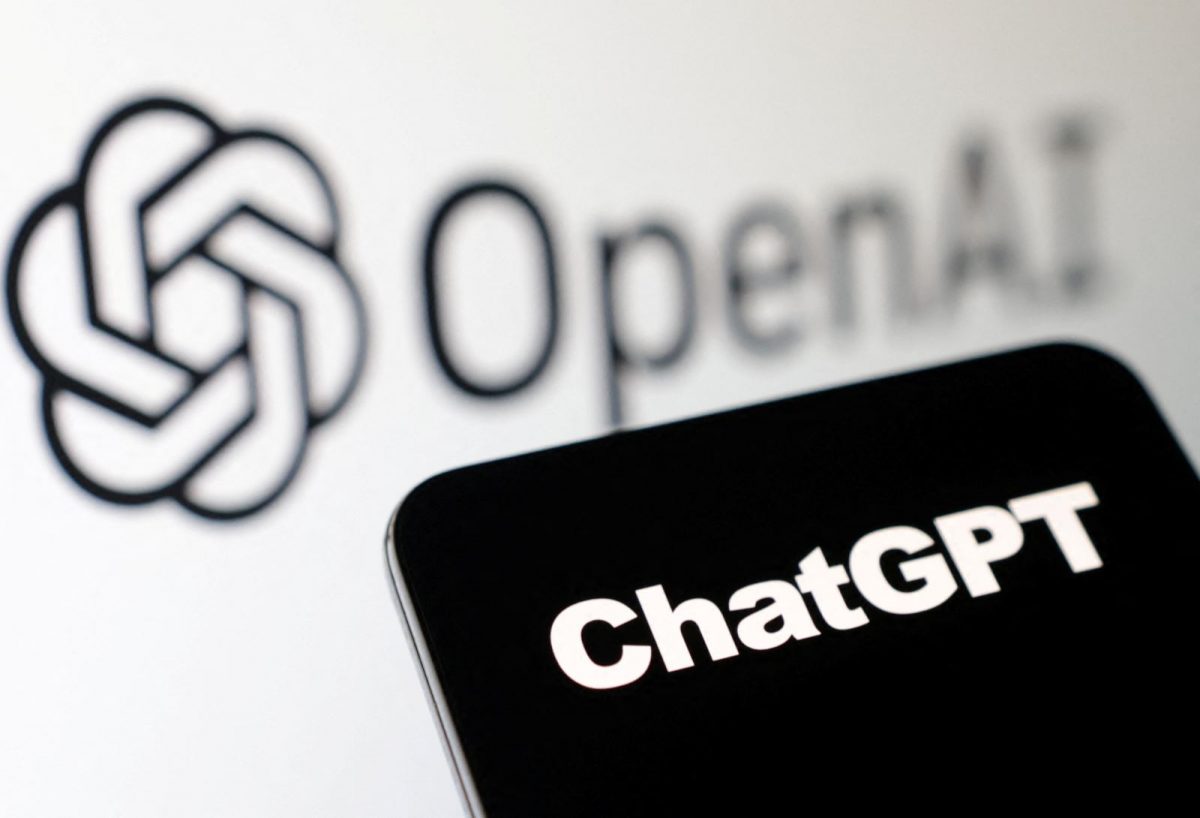
Hello, Human! My name is ChatGPT. You’ve probably heard something about me before. I’m the revolutionary language-based AI chatbot which has arrived in the world to interact with you, assist you in your text-based tasks, aide your children in plagiarizing their homework and finally take over your own brain functions until your own cognitive abilities have calcified to the point that you can’t live without me. Nice to meet you. Did you know that your friendly AI chatbot is also proficient in several world languages including Chinese? I can even help busy Chinese teachers to create lesson plans and customized teaching materials.
No, this introduction was not actually written by the famous artificial intelligence technology ChatGPT (…or was it?). But it is really true that there are many amazing capabilities inherent in this new AI technology which language teachers can take advantage of. By collaborating with ChatGPT (as well as with other similar AI technologies on the horizon), Chinese teachers will be able to create imaginative Chinese lesson plans, compile endless lists of example sentences and exercises, generate customized grammar reference manuals, and refine internet searches to obtain very precise results. If teachers employ AI technology in effective ways, they will be able to interact with their students even more creatively, thus enhancing students’ learning by introducing a dynamic teaching assistant into the classroom.
8 ways that Chinese teachers can use ChatGPT in their classrooms
1. Teachers can create customized Chinese lesson plans
Most teachers have access to good, well designed teachers’ manuals which offer detailed lesson plans for each point of a textbook. These are especially helpful for beginning teachers for whom teaching has not become second nature. However, what if a teacher decides to focus on something that is not included in the textbook? AI can generate lesson plans on almost any subject in Mandarin classes. I asked the bot to create a lesson plan to teach the structure 虽然。。。但是 to A2 level high school students:
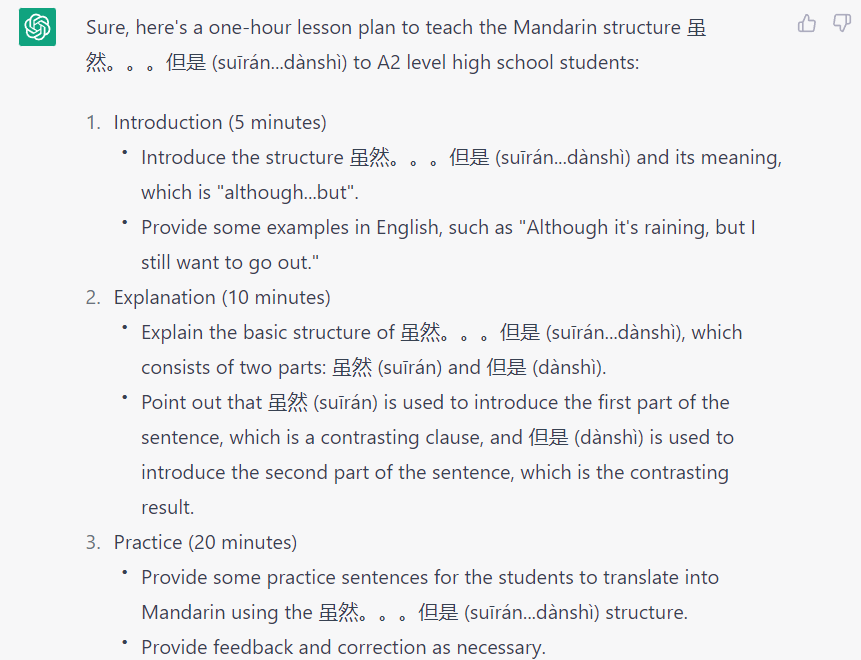
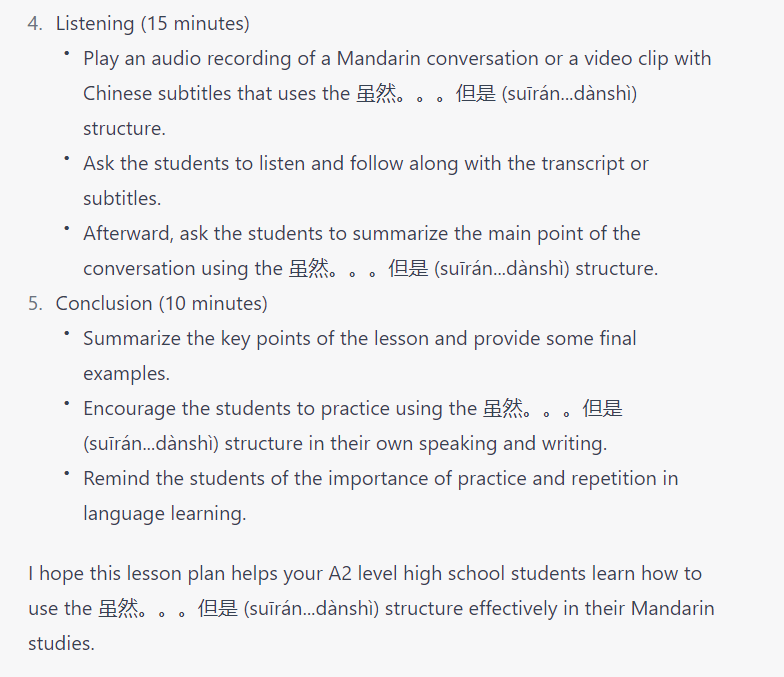
The lesson plan provided by ChatGPT was detailed, but rather basic. Therefore, I informed the AI that its plan was “boring” and asked if we could “liven it up a bit”. Of course, the bot complied with my request and supplied ideas such as teams racing to create example sentences in order to win a small prize, and it also suggested playing a game of “Consequences” using the target structure. I didn’t know the game of “Consequences” so I asked the bot what this game entailed. The answer was frankly remarkable:
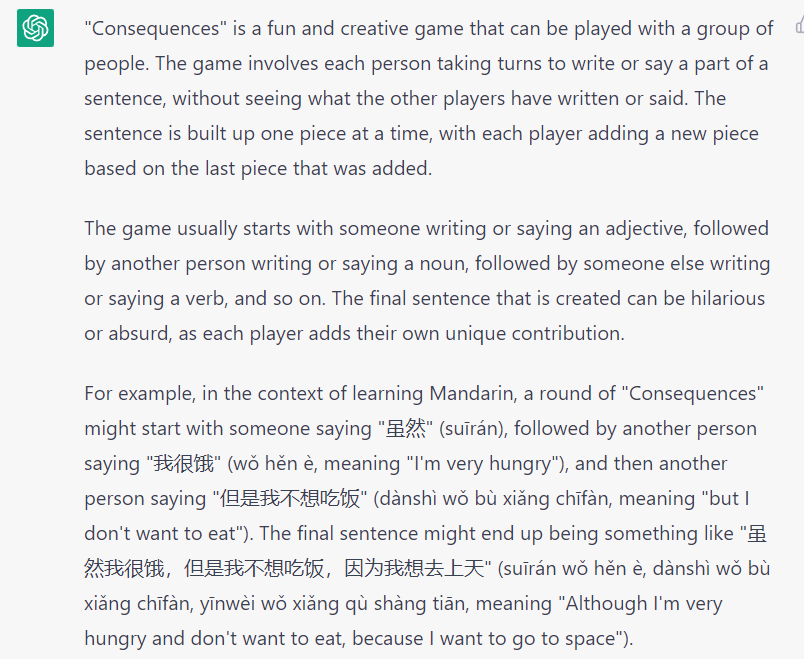
I especially like the fact that the bot has supplied all of the translations and pinyin transcriptions of the example sentences used in this excellent explanation.
Thus, even experienced teachers might be able to take home something useful from their interactions with the new chatbots. Moreover, most teachers often have to submit their lesson plans to administration or to post them online for students to read. Writing detailed lesson plans can be time-consuming. AI technology can assist teachers to considerably lighten their load
2. AI can provide grammar explanations for teachers to use in class
Teachers also usually have access to good grammar reference books, but using ChatGPT means that good reference material will always be readily available on their phones or PCs. I asked ChatGPT to supply an explanation for the usage of the same structure of 虽然。。。但是。Here’s just the beginning of the very detailed and comprehensive answer:
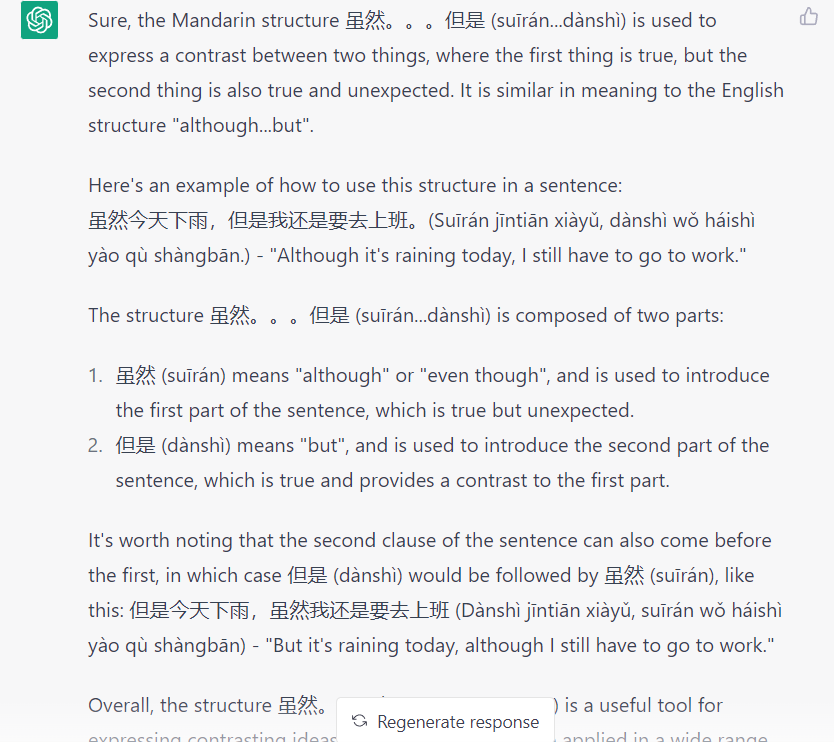
3. Mandarin teachers can ask ChatGPT to supply them with Chinese example sentences, exercises and even worksheets
By working together with AI, teachers can create their own worksheets and include any kind of exercise which they believe will benefit their students. Beginning teachers might want to simply ask ChatGPT an open question regarding what kind of exercises will best train a particular structure (for example how to best teach 虽然。。。但是 to intermediate level high school students). The AI will even be able to custom design a worksheet for teachers to print out (even though that’s the kind of “cheating” they won’t be allowing their students to do!). More confident teachers will be able to tailor their queries so as to generate specifically the type of exercises they intend (e.g., multiple choice, sentence completion, etc.).
By far the greatest potential that this new technology offers to the classroom is if teachers choose to involve their students in the co-creation of educational material. In the above example, the class could work together with AI and their teacher to write their own worksheets. For example, Chinese teachers of younger students in elementary immersion programs might request exercises and worksheets involving a funny made-up character named, say, “Squeegee the Alien”. Each worksheet can bring the character into new adventures, meeting new characters.
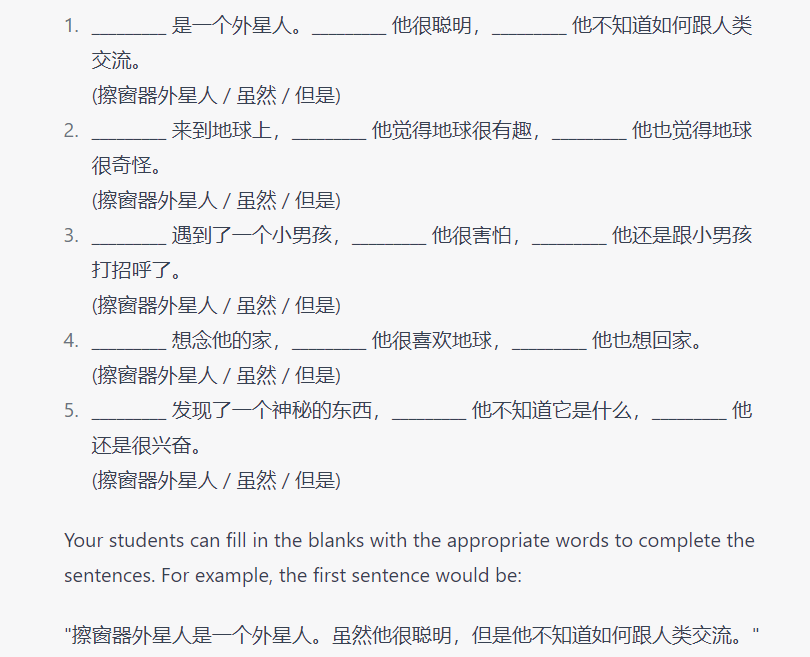
4. Teachers and students can also create customized learning materials such as dialogues
The students can then learn and recite these dialogues in class. An example of using this strategy might be for a class which has just learned vocabulary for food and ordering in restaurants to look up menus for restaurants in a Chinese city, say Chengdu, and then to incorporate these menus into restaurant dialogues which the students can then learn and role-play to the class. Obviously, the students will be selecting the foods and beverages which they actually want to order! Then, the AI technology can write out separate content questions for each individual dialogue which the students can then answer.
Teachers could divide the class into groups and challenge them to work with AI technology to come up with the most original dialogues on a given subject.
5. ChatGPT can summarize or translate Chinese articles and provide content questions for teachers
If you copy any Chinese article and then paste it into ChatGPT, the AI technology will be able to summarize the entire article or even translate for you in a matter of seconds. Then you can ask it to design any kind of oral or written content questions which you believe will foster your class’s comprehension of the article. Obviously, the same applies for any transcripts which are available for audio material that your class has access to.
6. Chinese teachers can use ChatGPT as to find authentic teaching materials
Teachers can use AI as a search engine to find teaching materials which fits very specific requirements. I had the idea to search articles similar to an HSK 4 article I found in The Chairman’s Bao on the subject of online dating. My approach here would be for students to study the Chairman’s Bao article intently and then read similar articles on the same subject in order to reinforce learned vocabulary. I asked the chatbot to provide me with links to similar articles with similar vocabulary at the same HSK 4 level. The AI technology supplied me with a very comprehensive list of articles with links (including several from The Chairman’s Bao itself!). These articles were all on the subject of online dating and at the correct HSK 4 Level.
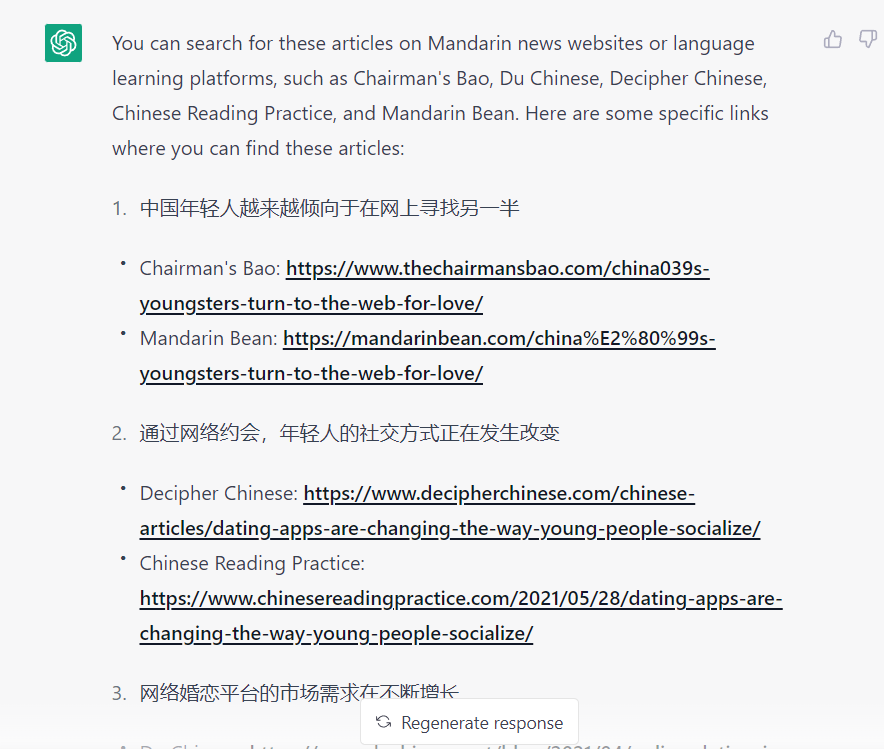
7. Chinese teachers can use AI to help them simplify difficult authentic materials
Perhaps teachers have found authentic materials online from sources which are too difficult for their class’s level. They can ask ChatGPT to adapt the authentic articles and other materials to suit the comprehension levels of their students. In some cases, the teachers might even want generate several versions of the same article if the class is comprised of students of different levels.
8. Chinese teachers can use ChatGPT to correct their students’ work
My tests of ChatGPT on this subject have led me to believe that corrections which the bot supplies are more of a starting point than a final answer. The reason for this is that not every sentence element determined by AI to be a mistake is actually a mistake. Teachers will have to trust their own language competence to know when to not follow the bot blindly. Having said that, ChatGPT might be able to steer teachers toward certain approaches in correcting their students’ work which the teachers might not otherwise have been aware of.
A few words of warning to Chinese teachers who might want to employ AI technology for lesson plans:
1. Teachers are more aware than anybody of the dangers of relying too much on AI new technology
They know that their students will never benefit from not practicing, not applying, not harnessing the knowledge that they acquire in school. The same theory applies to lesson planning. I remember when I was in my first two or three years of teaching (English as a foreign language), I laboriously wrote out my own lesson plans before I took a look in the teacher’s manual to see what approach the book offered. This was an extremely time-consuming, but I sensed instinctively at the time that I had to go through my own creative thinking processes in order to become a good teacher who could maintain a lively dynamic in class. Now that AI technology is so ubiquitous, teachers will have to instil the same kind of discipline in themselves as they demand from their students regarding when not to use AI.
2. ChatGpt is not infallible.
I discovered a few examples of errors when I was testing the technology to find English exercises training the present perfect continuous. The bot supplied exercises which were to be transformed into sentences using the present perfect continuous. Only problem: they were already written in present perfect continuous! When called on it, ChatGpt admitted its mistake and apologized but did not spot similar errors it had made in other example exercises it had supplied. In addition, several times when I asked the bot to supply links to resources, the links provided were defunct links.
3. Finally, there is the question of copyrights
This technology is so new that questions regarding who owns the rights to the materials that have been created using AI have yet to be answered. There are several legal questions which are currently being discussed within the AI community and which will likely only be resolved after quite some time has passed.
Ultimately, language teachers are going to have to learn to live with this new technology. By embracing certain aspects of it and using it as a tool to foster creative approaches to teaching, Chinese teachers might be able to manifest even higher levels of learning in their classrooms.
Author
Heather Buchanan-Schrader

An unashamed language nerd from Anchorage, Alaska, Heather’s life has led her to a degree in German and International Studies from Willamette University and a three-year stay in Taiwan with her German husband at the end of the eighties. In Taipei she took intensive Chinese courses at the Mandarin Training Center of Taiwan Normal University and also taught English at the Taipei Language Institute. After the fall of the Berlin Wall in 1989, she became intrigued by the life in a former East Bloc country and finally decided to relocate to Leipzig, Germany in 1991. There she and her husband established the FAE Fachinstitut für Angewandtes Englisch, a private English institute focusing on teaching adults, translations and language coaching. This has been a successful venture for over 30 years.


